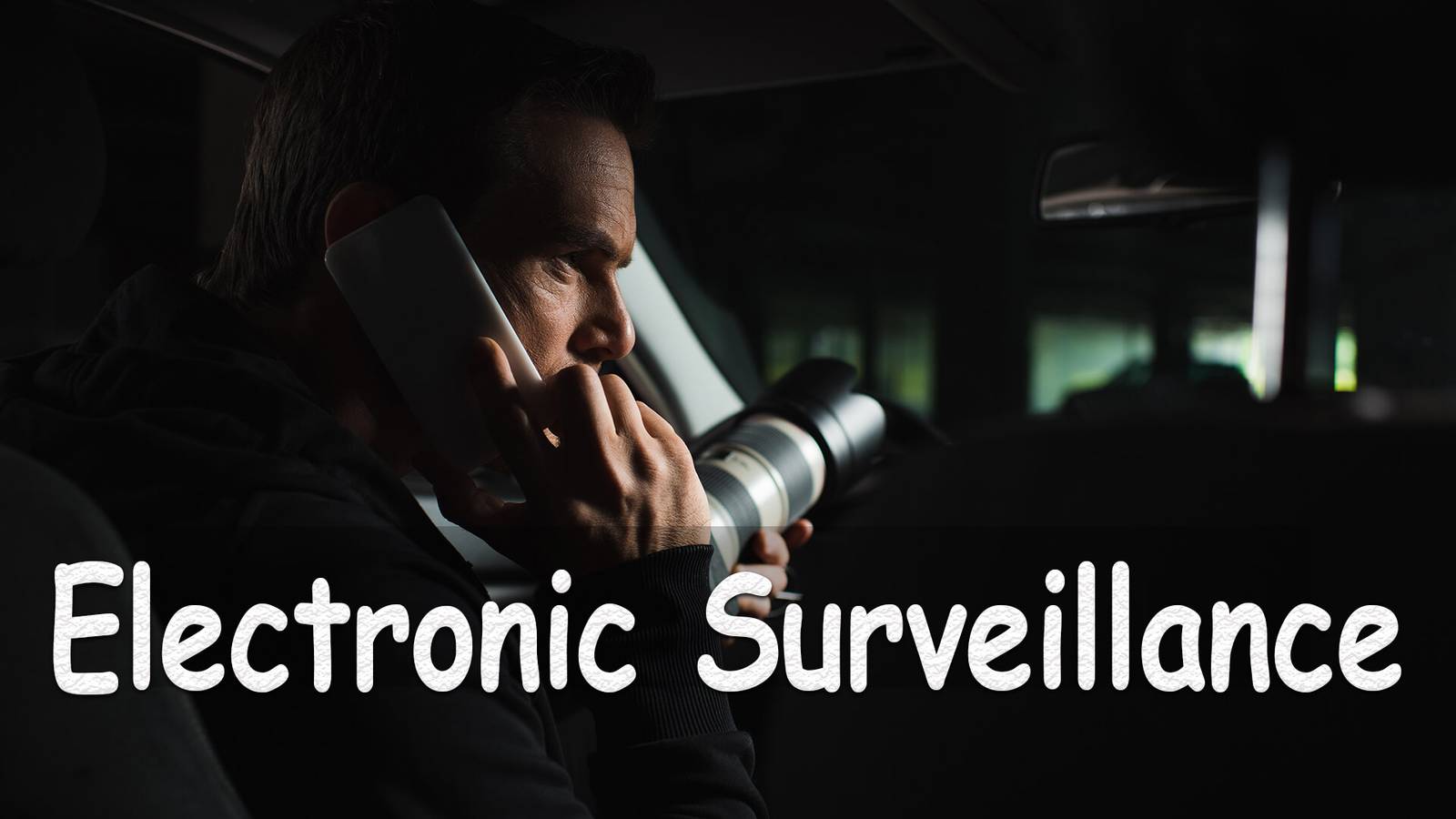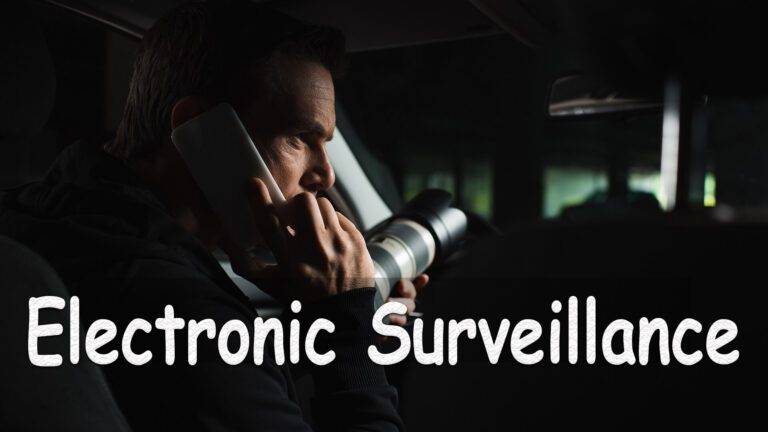Introduction:
Electronic surveillance means the monitoring of a home, office, business, or person using different devices. Those people can use CCTV, digital cameras, video recorders, legal tape-recording, and other different digital, electronic, visual, and audio devices to watch anything.

Nowadays, electronic surveillance also means that the surveillance is done with the help of computers, mobile, and other devices. Such surveillance may include e-mail tracking, internet surveillance, and computer monitoring.
Why Choose Electronic Surveillance?
People can use electronic surveillance to monitor what is happening in and around their house, even when they are not there for the security of the home. People can use a combination of both audio and video surveillance to get a clear idea of what is exactly happening at a specific time and place. It can be used to track activity, behavior, and details of a specific place for managing, security, and control purposes.
Is Electronic Surveillance Legitimate?
In many states, the law clearly describes who can use electronic surveillance methods and which techniques they can use for surveillance. Electronic surveillance laws by states are strict because the information collected with it easily can be used to disturb someone’s privacy.
Because of this, it is important people never try to attempt electronic surveillance on their own. If any person is caught doing this, he may face a lawsuit against him, and the information that he collected by surveillance is completely unacceptable in court.
Kinds of Electronic Surveillance:
Although the trend of surveillance, investigation has been increasing for a few years, it is because of the expanded crimes in our society. There are three most common kinds of electronic surveillance.
- Wiretapping includes the recording of telegraph messages and telephone calls by physically inserting the wiring. To carry out such a kind of surveillance, a person must tap into telephone and telegraph wire circuitry.
- Video Surveillance is a kind of electronic surveillance which is accomplished by inserting hidden or visible cameras to collect visual recordings of a place. This recording can be tracked at the same time or later on tape.
- Bugging is another kind of electronic surveillance that is carried out without inserting telephone wires. This is usually accomplished by placing a small microphone in a specific location to transfer the conversation to some person, receiver, or recorder.
Mobile Phone and Computer Surveillance:
Mobile phone and computer surveillance are also considered electronic surveillance. The information collected by mobile phone or computer can also help proceed with the investigation.
Mobile Phone Surveillance:
In this electronic era, the surveillance of mobile phones is becoming important to collect information and data about any person. With electronic surveillance of mobile phones, it is easy to locate the geographical location of an individual and find the future location of the someone. Nowadays, call records and text messages are being commonly used as evidence in court. For example, one can prove his partner cheating in court with unusual phone interaction with someone.
Computer Surveillance:
Computer surveillance can be used for tracking suspicious activities of an employee to malicious software. All businesses and people need to have complete knowledge of their computers. If they fail to monitor their computers, it can result in data loss, crashes, and information leakage. Computer surveillance can help business owners to reduce or eliminate computer security fears.
Who Can Use Electronic Surveillance and Why?
Intelligence agencies and police use various invasive methods for gathering information. Although, the purpose and ways of utilizing these methods may be different. Intelligence agencies use invasive techniques to monitor and find any threat to national security; prevent any terror and aggression activity within or outside of the country.
The definition of national security can be different for different countries according to their law. A common form of national security threat is the Cold War approach, which includes the threat of war by any foreign enemy country. The other threats to national security may include terrorism, aggression, and increased criminal activities.
Electronic Surveillance by Intelligence Agencies for Security
Intelligence agencies work for the national security of the country. They make sure to prevent any activity and planning by enemies against their county. They have a complete legal framework of surveillance in their country by greatly focusing on mass surveillance. Usually, intelligence agencies are the main users of such surveillance techniques, which means that they collect a large amount of electronic information about hidden threats.
Intelligence agencies receive information records from telecommunication companies and apply for government mass filtering computer programs on it. Most of the data collected by intelligence agencies with mass surveillance techniques is about the time and geographical location of the communication. But this information does not contain the content of the communication. The collection of metadata by mass surveillance has raised many questions across the country about whether it is a violation of privacy or not.
Are You Under Electronic Surveillance?
If you are outside of your home, there are chances you are under some form of surveillance. Most businesses, companies, banks, and other places use electronic surveillance to monitor activities around them and to have digital proof in case of any law violation. In big cities, digital monitoring devices like cameras, video recorders, etc., are installed to monitor activities in public places.
When Do I Need Electronic Surveillance?
Electronic surveillance can be a great option if you want a good security system for your home, office, business, or other places. You can practically secure your office or home with the help of electronic surveillance. In case of any unlawful activity, having digital evidence in the form of video, a photograph can help you to win the case.
Frequently Asked Questions (FAQs):
What is meant by an electronic surveillance provider?
Electronic surveillance is a surveillance technique used to monitor homes, businesses, or some person with the help of electronic devices like CCTV, video recorders, etc. An electronic surveillance provider is a person or agency that provides an electronic surveillance facility.
How is physical surveillance different from electronic surveillance?
Physical surveillance is one of the oldest law enforcement surveillance techniques, which are accomplished by using physical means of surveillance. On the other hand, electronic surveillance is a modern technique that allows performing the same surveillance functions with the help of electronic devices. Electronic surveillance makes it easy to collect evidence for use in any case.
Is electronic surveillance an unlawful act?
Many states consider electronic surveillance an unlawful act, according to their lawsuit. If a person tries to perform electronic surveillance of a person or business on his own, he can face court inquiry. In some exceptional cases, it is allowed by law. It is legitimate or not depends on the law of the state or country in which you reside.
Who is allowed legally to do electronic surveillance?
The public prosecutor plays a great role in supervising the collection of evidence in an investigation. In many lawsuits, the public prosecutor is allowed to accomplish electronic surveillance to gather important evidence for investigation. But in the traditional law system, a public prosecutor is not allowed to issue arrest warrants of any individual. Intelligence agencies and police are also allowed legally to deal with every case.


